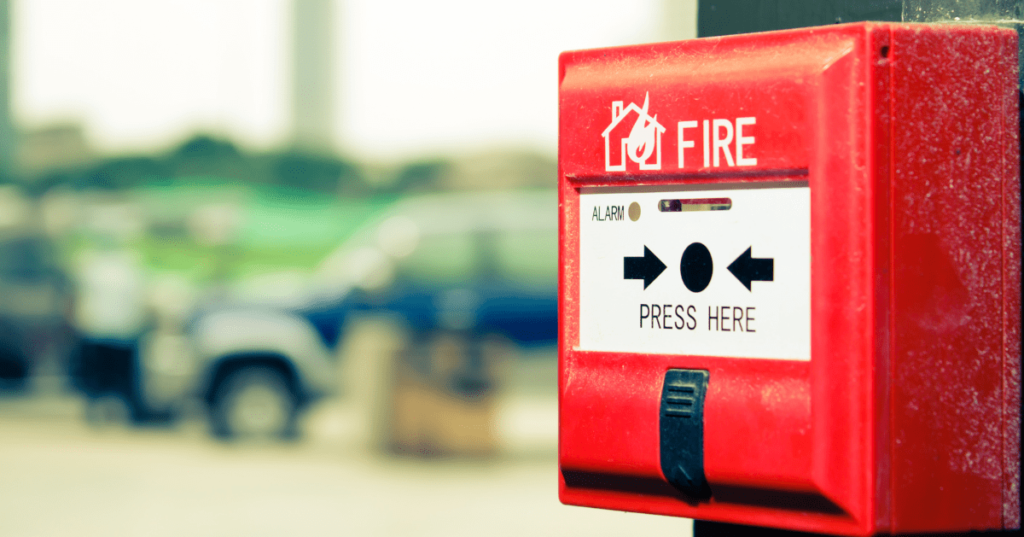What is a fire alarm system?
A fire alarm system is a device or a set of devices that sets off a visible or audible or visible and audible alarm in a fire incident. The industrial fire design consultants design the fire alarm system based on the project’s requirements. Usually, in a “Total Design” project, the fire safety consultants form a part of the project team from the start. They participate in the design charrette. This helps in a proper understanding of the area allocation in the facility. Additionally, this helps in optimising the design.
A fire alarm system enables the occupants to escape the fire early and prevent damage to the property. Additionally, the fire alarm system alerts the occupants about the fire in the building. Moreover, the fire alarm system ensures compliance.
The components of a fire alarm system include a fire alarm panel, detectors, bases, call points, sounders and flashes, fire alarm batteries.
Types of fire alarms:
Fire alarms are of different types based on location, noise, and statutory requirements. Furthermore, fire safety consultants design the fire alarm system of one type or combination. Some of the types are:
- Manual or electric bell or gong
- Electrical Siren
- Hooter (Electrical)
- Emergency voice alarm communication system.
- Warning Lights, electrical- flashing or rotary.
The industrial fire consultants design the alarm system as per the recommendations of fire codes.
Fire Alarm Detectors
Detection devices are a critical part of the fire alarm system. They vary from simple, manually operated break glass units to smoke detectors. Some of the commonly used detection devices are:
- Heat Detectors: The heat detectors have a set temperature or temperature change rate as a trigger.
- Smoke Detector: A smoke detector detects smoke s an indicator of fire. They are of three types ionization type, light scattering type and light obscuring type.
- Carbon Monoxide Detectors: They are also called CO Detectors. They are electronic devices to sense the level of carbon monoxide in the air. A rise in the level triggers the alarm.
- Multi-Sensor Detectors: it is a combination of both optical and heat detectors. These detectors are designed to detect a varied range of fires. The circuitry has an algorithm built into it to trigger the sensor.
- Manual Call Points: This device enables the occupants to intimate others about fire by manually breaking the glass and triggering the alarm.
Why do industrial fire design consultants recommend installing a fire alarm?
While there are multiple reasons industrial fire design consultants use fire alarm systems, the main reason is occupants’ safety. Some of them are:
- To detect fire
- To alert the occupants
- Fire alarm system helps manage risks and activate other systems like lift homing, smoke control
- Notify the fire department
- And finally, compliance with local regulations
To conclude, fire alarm systems are a part of the FRMS in any industry. Moreover, the fire design consultants design the fire alarm system to protect the occupants and property and for compliance purposes.












